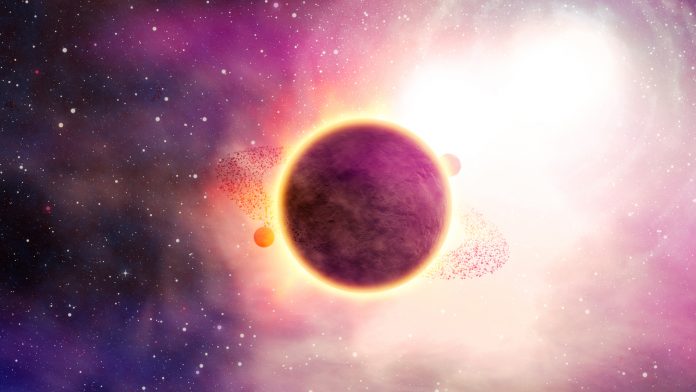An international team of astronomers led by the University of Wisconsin-Madison, USA, has found the first example of an intact planet closely orbiting a white dwarf.
A white dwarf is a small dense star which is formed when a low-mass star has exhausted all its central nuclear fuel and lost its outer layers as a planetary nebula. The team from the University of Wisconsin-Madison found that a planet, named WD 1856 b, is orbiting a white dwarf star which is seven times smaller than itself.
According to the research team, including co-authors from NASA, HKU’s Laboratory for Space Research (LSR), and the Raemor Vista Observatory, this is the first time researchers have detected a planet orbiting a dwarf star, Thomas Kaye from the Raemor Vista Observatory, said: “WD 1856 b is a planet that shouldn’t be there. The initial observations from our observatory shocked us because the star lost half of its brightness and then recovered minutes later.”
Near the end of a star’s nuclear burning stage, it expels most of its outer material, creating a planetary nebula. The WD 1856 b planet should have been destroyed in this process. The research team believe that the only explanation for its survival is that it migrated in from a safe distant orbit. “How the planet came to orbit so close to this star after its red giant phase is still a mystery,” said Kaye.
Secondary research on WD 1856 b
After the researchers initially observed WD 1856 b, the team sought confirmation from a myriad of international observatories. The NASA Spitzer infra-red telescope managed by the Jet Propulsion Laboratory confirmed that the planet was orbiting the white dwarf. Final confirmation was given by the Gran Telescopio Canarias in Spain, one of the largest telescopes in the world.
Professor Quentin Parker, director of LSR, said: “The LSR has only a few external members, those committed to our ethos and aims and who regularly visit to work with us on a variety of projects, and who are particularly keen to be associated with us. In this vein we are very proud of Tom Kaye’s significant contribution to this important, landmark paper on the first confirmed detection of a planet orbiting a white dwarf star, and especially his desire to recognise our value to him.”









